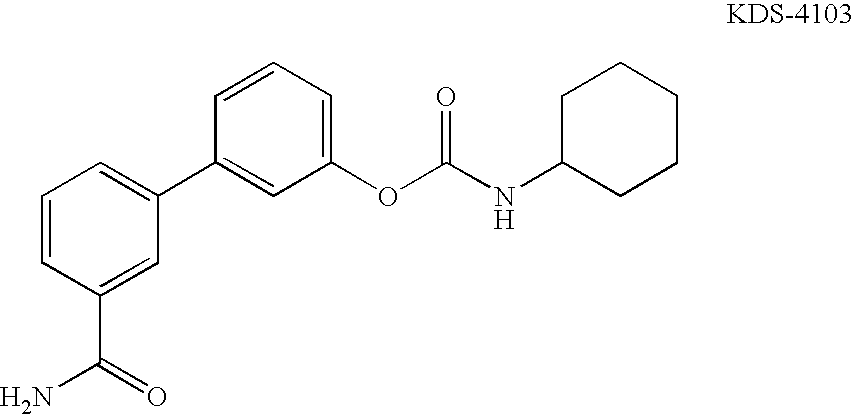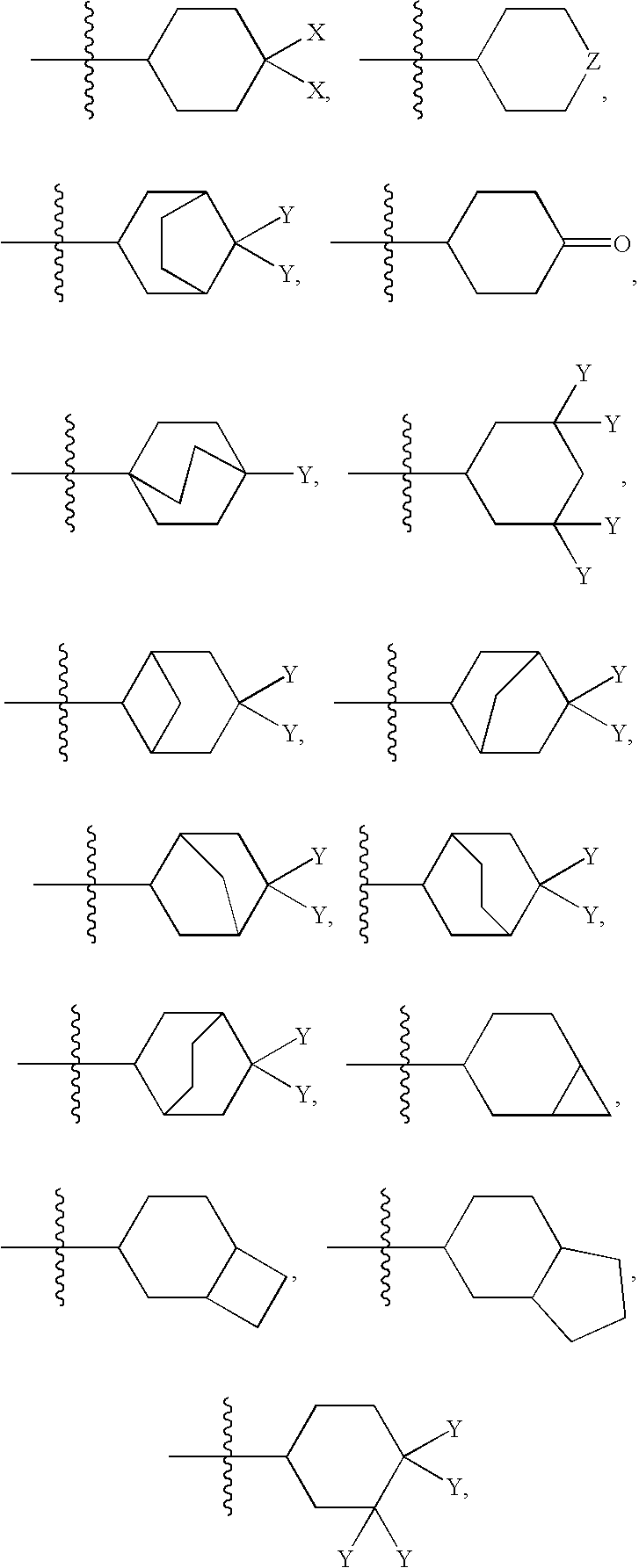Metabolically-stabilized inhibitors of fatty acid amide hydrolase
a fatty acid amide hydrolase, metabolically stabilized technology, applied in the direction of biocide, organic chemistry, drug compositions, etc., can solve the problems of increasing the levels of these fatty acid amides, and achieve the effect of increasing the levels of endogenous fatty acid amides and increasing the levels
- Summary
- Abstract
- Description
- Claims
- Application Information
AI Technical Summary
Benefits of technology
Problems solved by technology
Method used
Image
Examples
example 1
General Procedure for the Preparation of Metabolically-Stabilized Inhibitors of FAAH
[0688]To a stirred solution of 4-Dimethylcyclohexylamine (1 mmol, 127 mgs) in THF (10 mL) at room temperature was added 4-nitrophenol carbonate (1 mmol, 304 mgs). After 30 minutes, 60% sodium hydride in mineral oil (1 mmol, 40 mgs) was added in one portion followed by 5′-hydroxybiphenyl-3-carboxamide (1 mmol, 213 mgs). The reaction mixture was stirred for 5 minutes and 60% sodium hydride in mineral oil (1 mmol, 40 mgs) was added in one portion. The reaction mixture was stirred for 3 more hours and was quenched with water. The crude product was extracted with ethyl acetate and the organic layer was evaporated. The residual solid was purified by reverse phase HPLC to yield the product as a white powder. MS (ESI) MH+:367.
example 2
Methods of Screening Compounds for Metabolic Stability
[0689]Generally, a FAAH inhibitor was incubated in human liver S9 fractions. Incubations were conducted at 37° C. in a potassium phosphate buffer (pH 7.2). NADPH and a regenerating system consisting of NADP, glucose 6-phosphate dehydrogenase were provided to the incubates. Incubations were terminated by the addition of methanol and freezing at −80° C. See, e.g., Singh, R. et al. Rapid Commun. Mass Spectrom., 10: 1019-26 (1996).
example 3
Methods of Screening Compound for FAAH Inhibitory Activity
[0690]Generally, a FAAH inhibitor used in the methods described herein is identified as an inhibitor of FAAH in vitro. Preferred in vitro assays detect a decrease in the level of a FAAH substrate (e.g., anandamide, OEA) or an increase in the release of a reaction product (e.g., fatty acid amide or ethanolamine) by FAAH-mediated hydrolysis of a substrate such as AEA or OEA. The substrate may be labeled to facilitate detection of the released reaction products. High throughput assays for the presence, absence, or quantification of particular reaction products are well known to those of ordinary skill in the art. In addition, high throughput screening systems are commercially available (see, e.g., Zymark Corp., Hopkinton, Mass.; Air Technical Industries, Mentor, Ohio; Beckman Instruments, Inc. Fullerton, Calif.; Precision Systems, Inc., Natick, Mass., etc.). These systems typically automate entire procedures including all sample...
PUM
| Property | Measurement | Unit |
|---|---|---|
| Force | aaaaa | aaaaa |
| Acidity | aaaaa | aaaaa |
Abstract
Description
Claims
Application Information
 Login to View More
Login to View More - R&D
- Intellectual Property
- Life Sciences
- Materials
- Tech Scout
- Unparalleled Data Quality
- Higher Quality Content
- 60% Fewer Hallucinations
Browse by: Latest US Patents, China's latest patents, Technical Efficacy Thesaurus, Application Domain, Technology Topic, Popular Technical Reports.
© 2025 PatSnap. All rights reserved.Legal|Privacy policy|Modern Slavery Act Transparency Statement|Sitemap|About US| Contact US: help@patsnap.com



